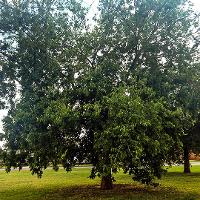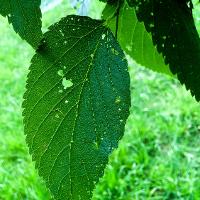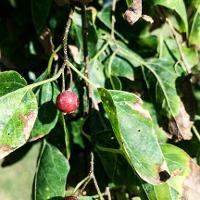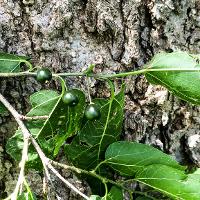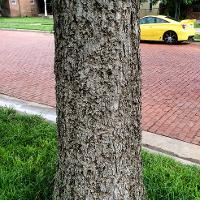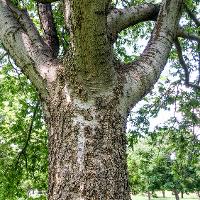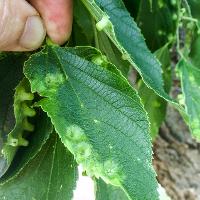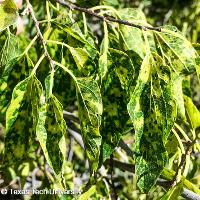Hackberry
Celtis occidentalis
Deciduous-Trees
Hackberry is a tough tree whose size and wildlife-attracting fruit make it best suited for large areas such as parks.
(Detailed plant information can be found at the bottom of the page.)
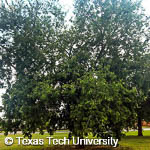
Celtis occidentalis Photo Gallery
Celtis occidentalis Plant Information
| Classification | |
|---|---|
| Scientific Name: | Celtis occidentalis |
| Common Name: | hackberry |
| Family: | Ulmaceae |
| Suggested Uses: | park, golf course, large areas |
| Characteristics | |
| Height: | 40 - 60 feet tall |
| Foliage: | alternate, simple, and deciduous with an inequilateral base serrated except at the base (serrations start 1/8 to 1/4 of the way up the leaf) three large veins at the leaf base (palmate venation) |
| Flower: | monoecious |
| Fruit: | orange-red, yellow, drupe on a 1 to 2 inch long pedicel ripens in Fall |
| Bark: | scaly up to first limbs then smooth with warts |
| Environment | |
| Water: | drought-tolerant |
| Soil: | tolerates alkaline soils |
| USDA Zone: | zone 3 to 9 |
| Care | |
| Maintenance: | tough tree that can grow in the most adverse conditions |
| Pests & Pathology: | leaf galls are common |
| Wildlife: | ripened fruit attracts wildlife |
TTU Plant Resources
-
Address
Texas Tech University, Department of Plant and Soil Science, Box 42122, Lubbock, TX 79409 -
Phone
806.742.2838 -
Email
Melanie.Jackson@ttu.edu

